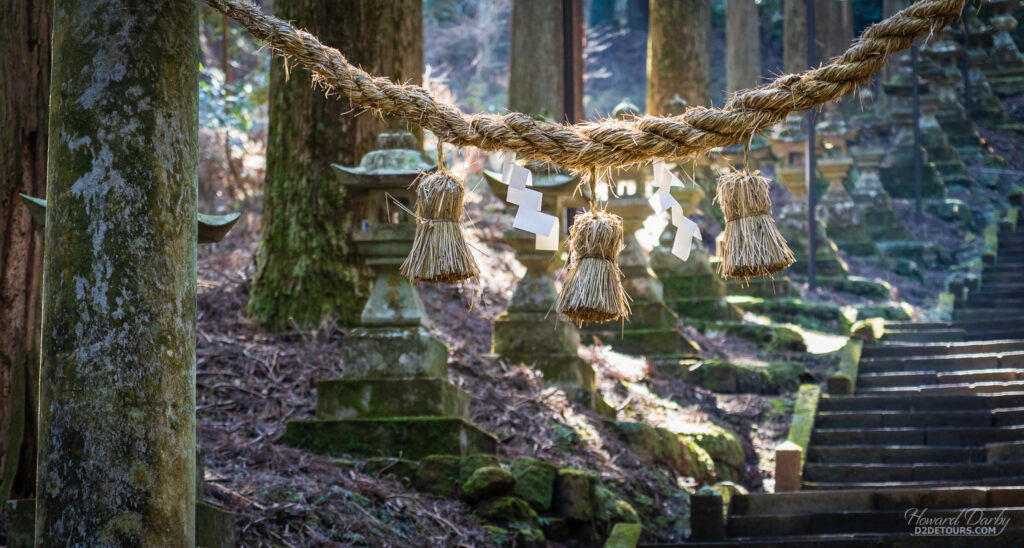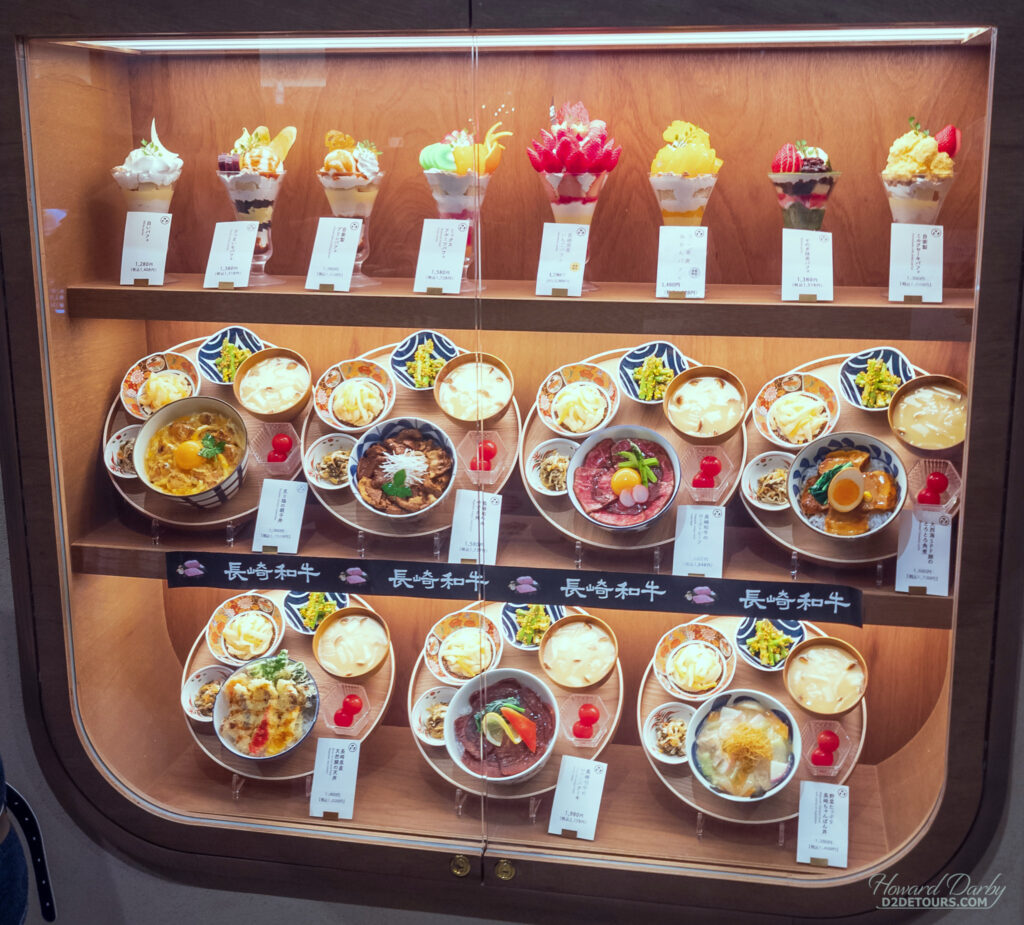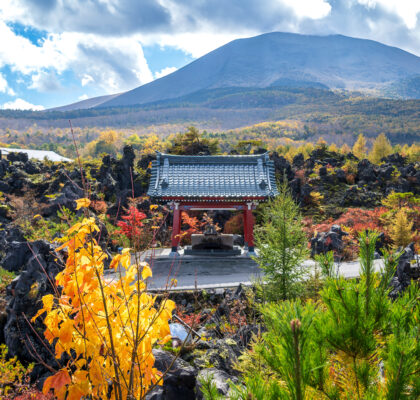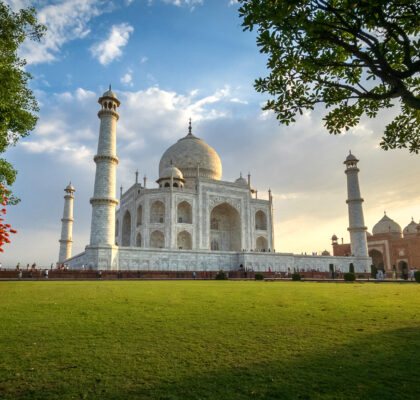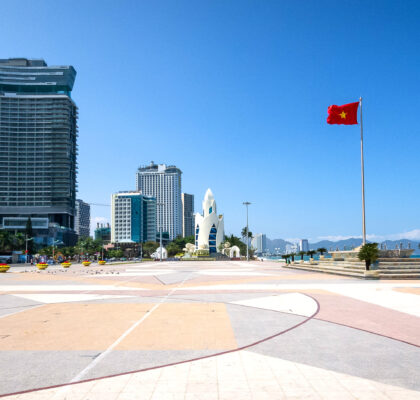After spending 9 nights in Tokyo and 7 nights in Kyoto, we ended our time in Japan with a whirlwind journey west, covering roughly 1100 km (690 miles) and using just about every mode of transport possible: train, bus, ferry, street car/tram and taxi, before finally catching a flight to Seoul, South Korea.
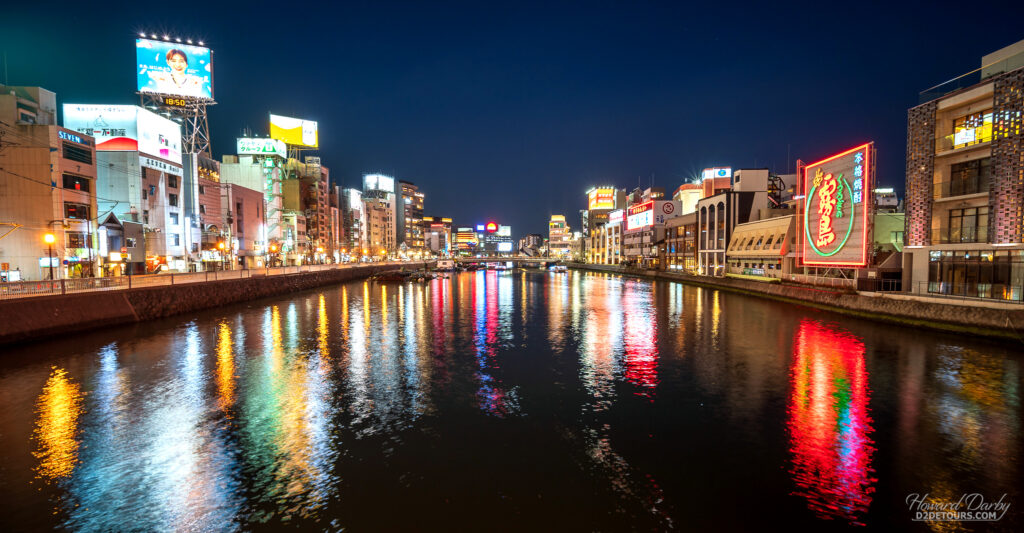
Visiting Japan during the winter certainly cuts down on crowds, but you do miss out on some seasonal colour. We saw hints of what several cities must look like in spring when the sakura (cherry) and plum trees are in full blossom. Summer turns much of the landscape a brilliant green and, based on some pictures we saw, the fall foliage is spectacular. Oh, well, it just means we have to plan a return trip sometime in the future.
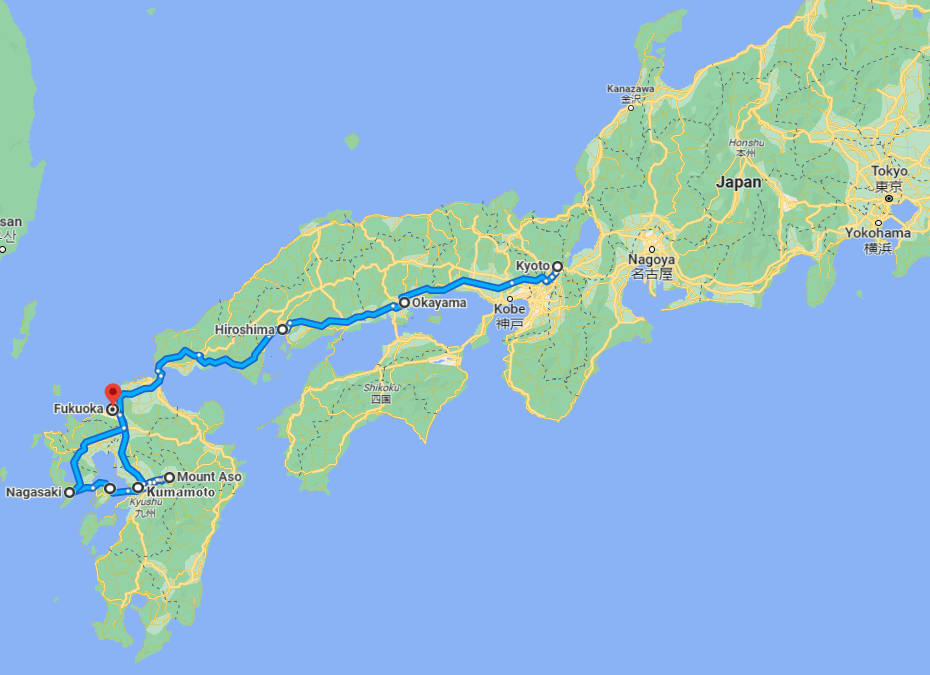
Dollars – As we have learned in the past, our budget takes a beating by moving this quickly. Transportation costs alone accounted for a third of our budget, and we averaged just over $241/day Canadian ($174 USD / €163) for this 10-night trip (1 night Okayama, 4 nights Kumamoto, 3 nights Nagasaki, and 2 nights in Fukuoka). The price of accommodation was a bit painful too. Fortunately we found the cost of food to be quite reasonable – good thing we like ramen!

Okayama – The Okayama train station is a little over an hour by bullet train from the Kyoto station. We stayed at the Hotel Granvia Okayama immediately adjacent to the train station. Although we arrived several hours too early for check-in, the hotel kindly stored our luggage (and then delivered it to our room) so that we could spend the afternoon wandering through the Bikan Historical Quarter in the town of Kurashiki, about a 30-minute train ride from the Okayama station.
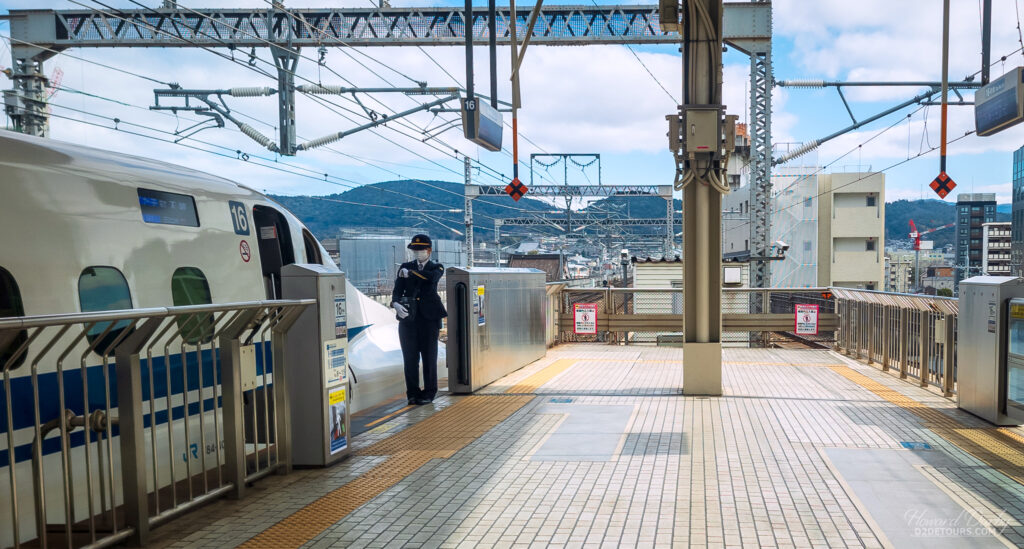
During the Edo Period (1603-1867) rice harvested from the surrounding fields was stored in warehouses located along the banks of the river in Kurashiki (which roughly translated means “town of storehouses”) before being shipped onward. As an integral distribution point along Japan’s trade route, Kurashiki reaped the benefits of being a Tokugawa shogunate protectorate. It became quite prosperous and many of the storehouses with namako-kabe (a white grid pattern overtop black slate) plaster walls and machiya (merchant houses) have been beautifully maintained. Today those buildings house cafes, boutiques and museums. I don’t know whether it was the combination of time of year (February), day of week (Wednesday) and time of day (mid-afternoon) but there were very few people in the Quarter making for a most enjoyable time strolling through the narrow streets and along the canal.
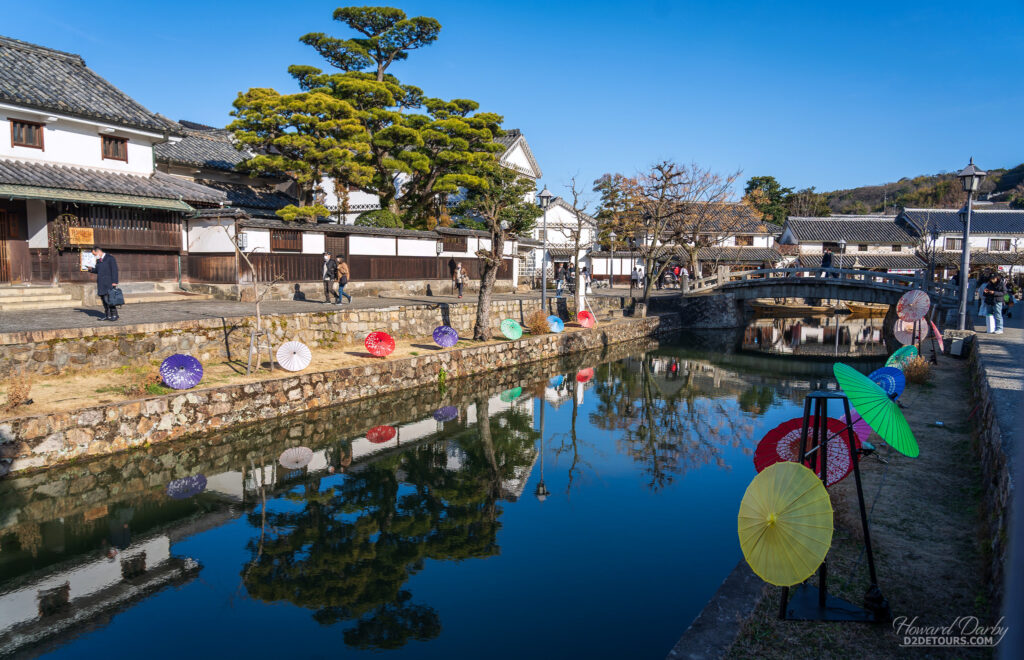
Perched above the historical quarter, atop Mt. Tsurugata, is the Buddhist shrine, Achi, which legend says dates back to the 4th century CE.
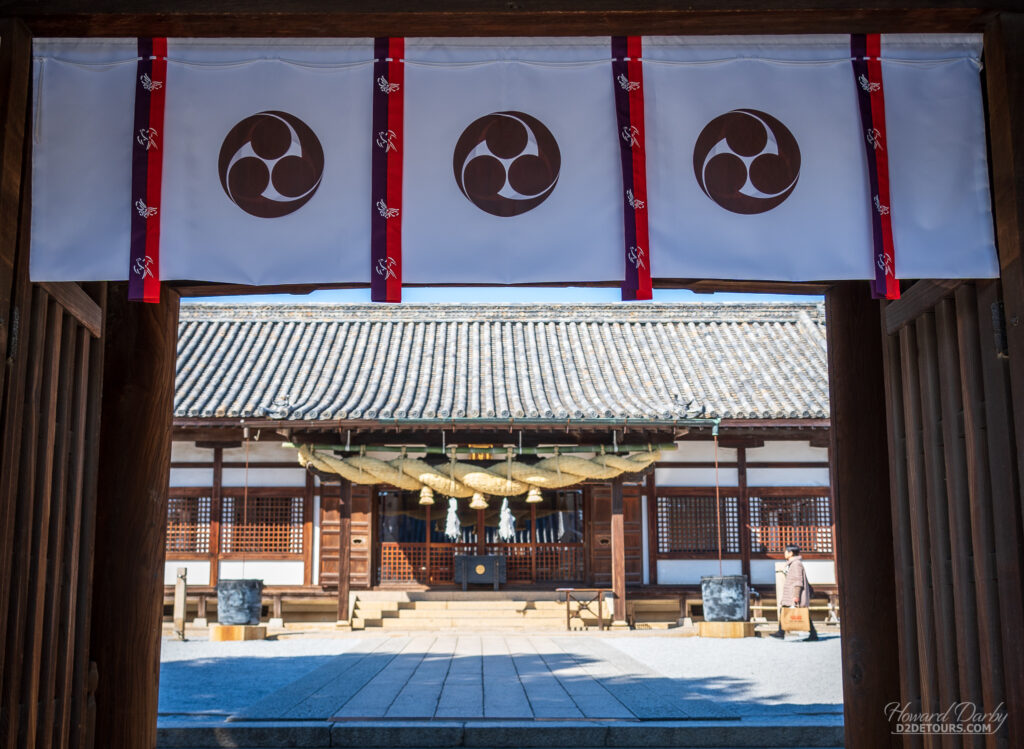
Serenity is the first word that comes to mind walking the grounds of this complex; we were virtually alone, just the wind in the leaves and the birds in the trees. Dedicated to three sea faring goddesses, this shrine was an important stop for those seeking safety at sea and good fortune in trade.
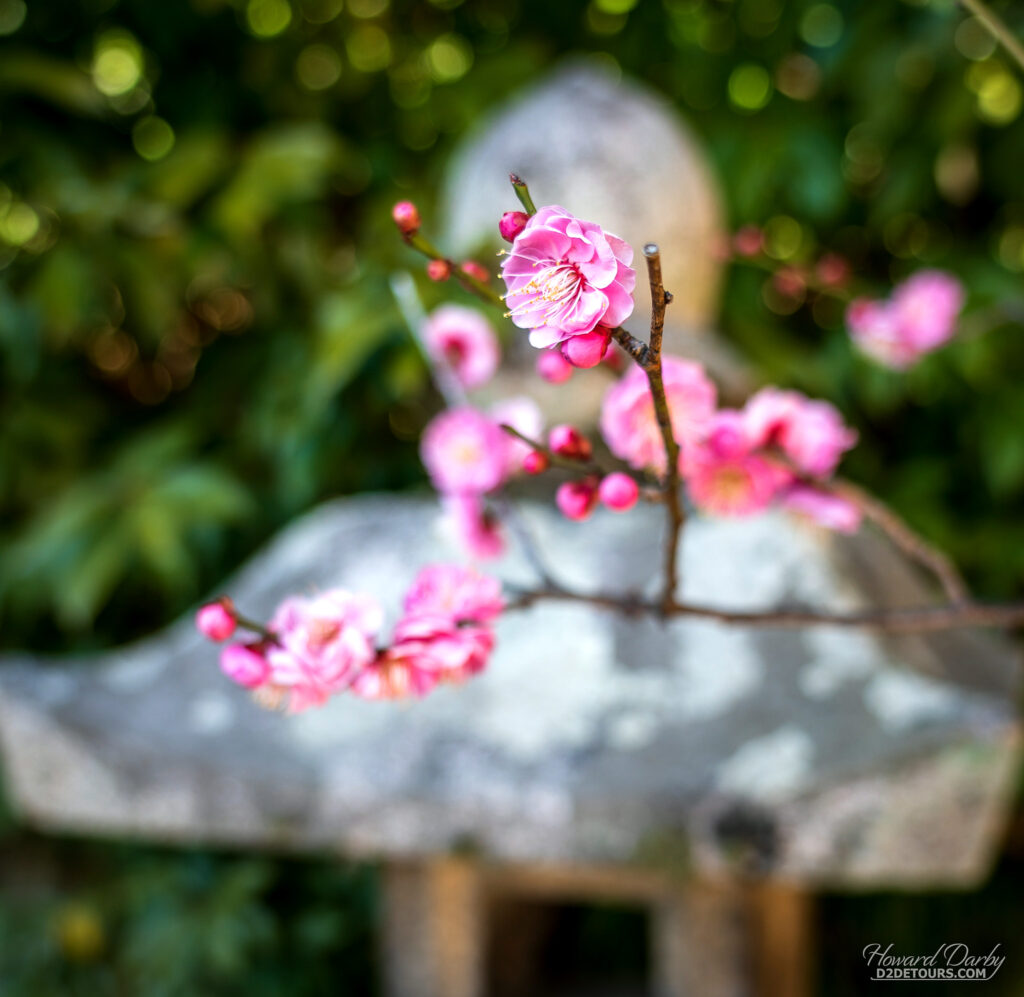
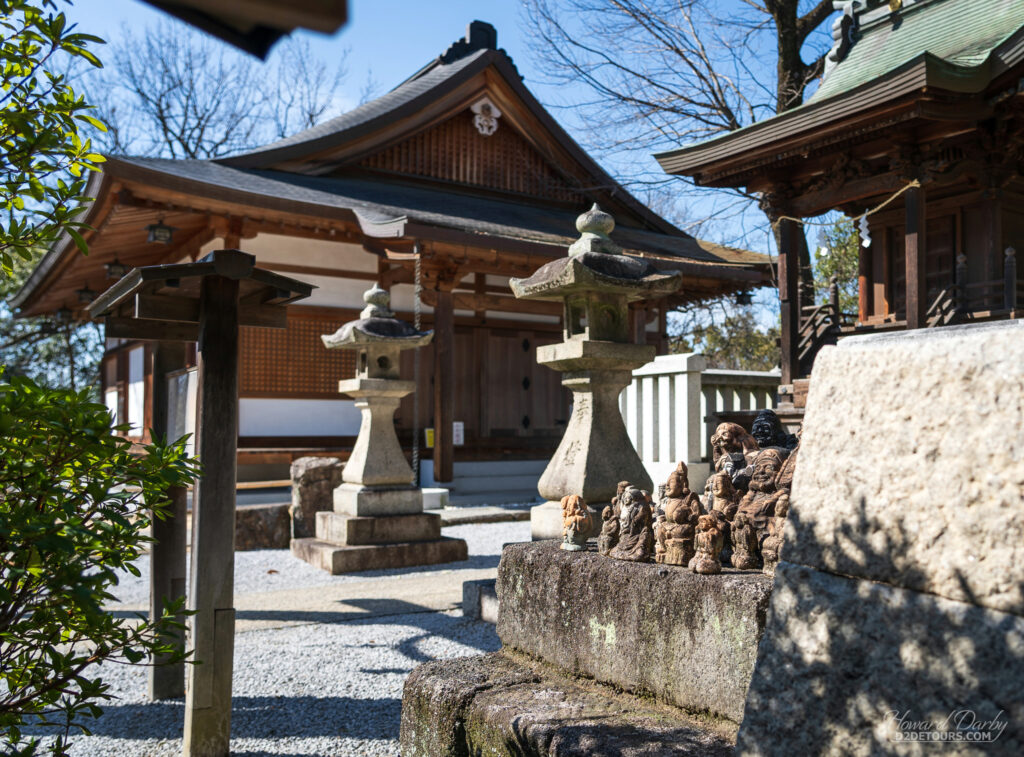
Hiroshima – En route from Okayama to Kumamoto we stopped at Hiroshima to visit the Peace Memorial. I was surprised at how emotional I became as we first caught sight of the Genbaku Dome (aka The Bomb Dome), one of the few structures left standing following the August 6, 1945 atomic bomb drop.
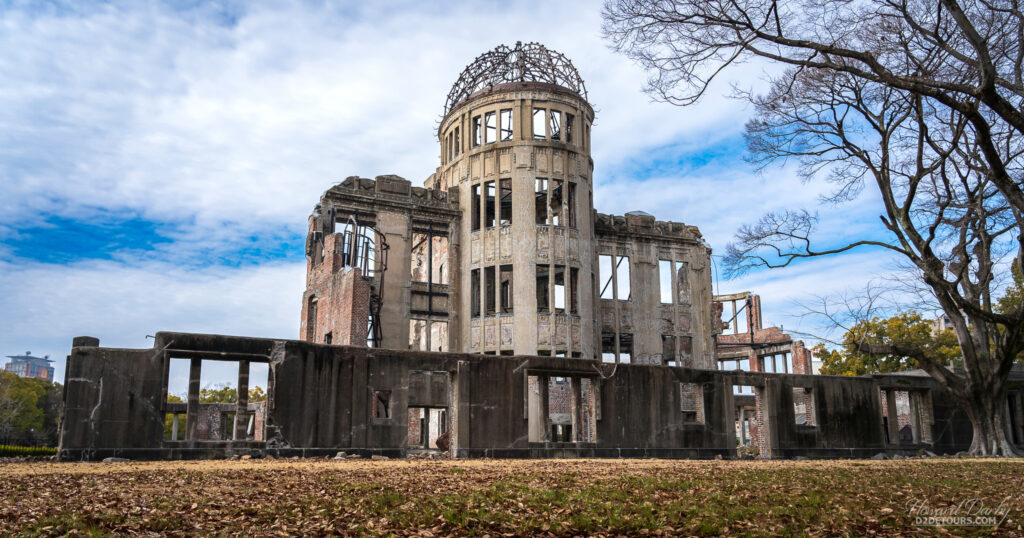
From that point on everything in the park and in the museum was viewed through a haze of tears. I think I felt a profound sense of responsibility for the horror, which I recognized is ridiculous, but that’s how I felt. In 1943, the Quebec Agreement between the UK and the US outlined the coordinated development of nuclear energy in general, and nuclear weapons specifically. While Canada was not a signatory to that agreement, they were asked to be present during signing as we would be supplying high-level technical information to aid in the development. The Peace Museum tells the story of the aftermath of the bomb through victims’ belongings, photographs, and testimonials. It is heart wrenching. Interestingly, I didn’t feel any sense of rancor in how the artifacts were displayed or explained, it was simply the facts and not surprisingly the message the museum hopes every visitor will embrace following their visit is: “No More Hiroshimas.” I know I certainly felt that way. Entrance to the museum is ¥200/pp ($2 CAD) and there can be long lines waiting to get in.

Quick note – if you are just stopping in Hiroshima to visit the memorial before continuing to a final destination and accordingly have luggage, there are coin-operated storage lockers in the train station where you can leave your bags. There are several banks of lockers right near the train platform exits and lots of people were circling in the vain hope that someone would show up to retrieve their bag, thus freeing up a locker. We had just about decided to drag our bags with us to the memorial park (not a particularly attractive option, but the only one we could see) when Howard thought he’d just check with the visitors’ information office. Hallelujah … there are more lockers tucked in at the back of the shopping area on the second floor and even more lockers outside the station. Best ¥700 ($7 CAD) I’ve ever spent. The tram to the Peace Memorial (take either the #2 or #6) can be caught right outside the Hiroshima train station – it’s about a 15 minute ride. Unlike some of the other buses or trams we’d taken in Japan, you must tap your Suica (or IC card) when you board the tram and then tap it again when you exit. If you forget to tap upon boarding it becomes an embarrassing exercise when you disembark as the card reader flashes yellow “highlighting” your blunder and other passengers start trying to explain what you did wrong. Fortunately, there was someone stationed at the platform whose job it is to “correct” fare errors.
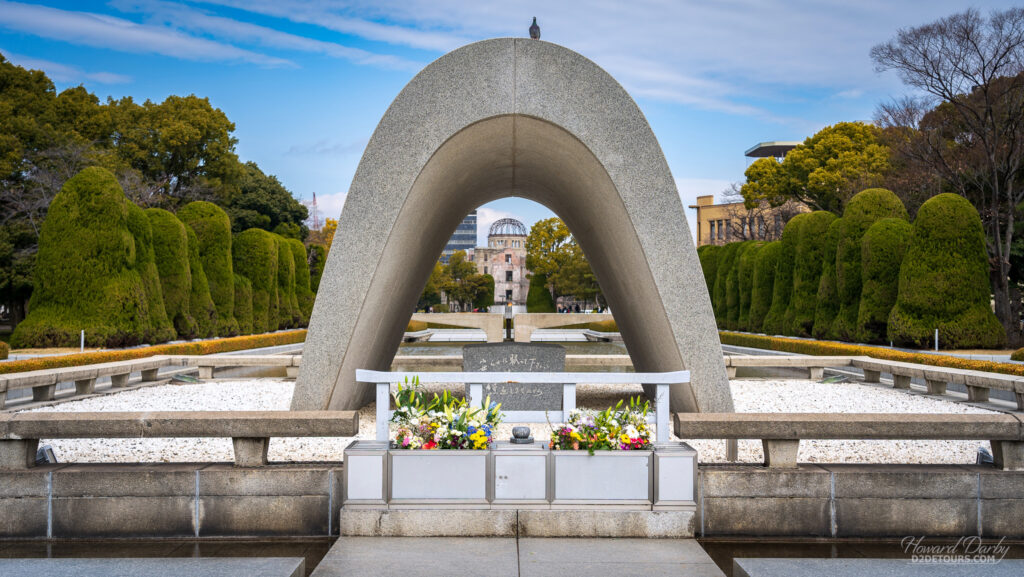
Kumamoto – While the most powerful shogunate may have surrendered in 1868, restoring power to the emperor (the Meiji Restoration), clusters of seditious activity continued to plague the country. The Satsuma Rebellion in 1877 was the last of its kind. The Satsuma region at the southern tip of the Japanese archipelago (present day Kagoshima) was heavily populated by samurai who found themselves unemployed following the Meiji military reforms. These disaffected nobles, led by Saigō Takamori (who, funnily enough, had been a staunch supporter of the Meiji Restoration, before growing disillusioned with its political motivations) set out for Tokyo to air their grievances. Their march from Satsuma took them straight through Kumamoto where one of the principal garrisons of the Imperial Army was stationed. The Meiji government feared that the loss of such a heavily fortified castle like Kumamoto, with its 49 turrets and 18 turret gates, would serve as a rallying cry for more rebellion and dispatched additional troops. It would take 52 days for help to arrive, during which time 3,500 troops withstood the siege of 13,000 Satsuma soldiers.
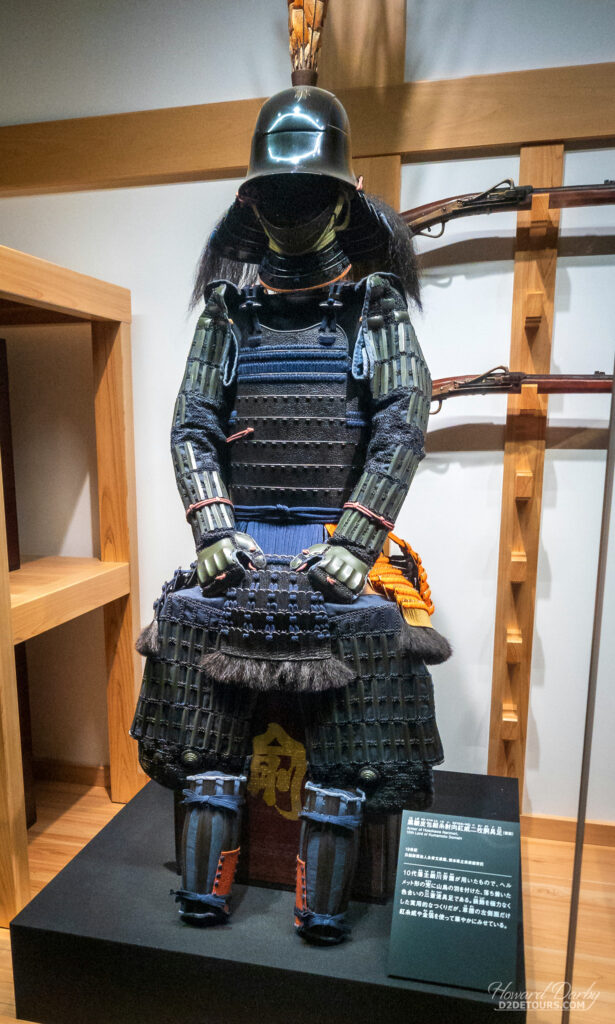
The Imperial Army prevailed but only 13 buildings within the entire castle complex survived unscathed and those have been designated “Important Cultural Properties.” Massive restoration work was begun in 1960 and completed between 1998 and 2008. In 2016 Kumamoto was hit with a series of devastating earthquakes, the strongest of which measured 7.0 in magnitude and unfortunately, along with hundreds of other buildings in the city, the castle complex suffered damage warranting new restoration work.

Entrance to the castle complex was ¥800/pp ($8.00 CAD) but if we bought the combo ticket (for an extra .50¢) that would include admission to the Kumamoto City Museum, a few blocks northwest of the castle. We bought the combo ticket and found the museum very informative too.
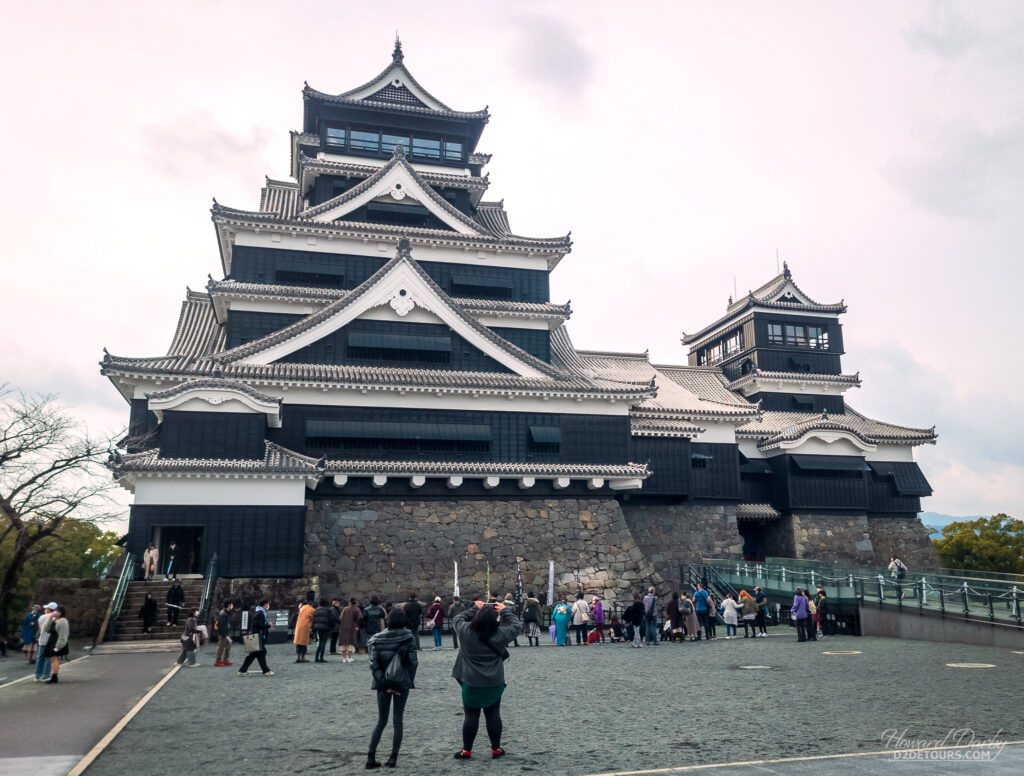
We timed our stay in Kumamoto to coincide with the local fast draw club’s Saturday practice. Howard had been diagnosed with an arthritic condition clinically known as Trigger Finger, which is the result of overuse and can affect any finger, but in his case was a literal diagnosis! It had become so painful at the end of the 2018 season that, on doctor’s orders, he stopped shooting for a year hoping time would reduce the inflammation. Then Covid hit, shutting down all of the shooting ranges and our new nomadic lifestyle necessitated the selling of all of his guns. So, long story short, he has not fired a gun in more than 4 years! It was fun for him to strap on a holster again and prove he’s “still got it.” More information on Fast Draw can be found at howarddarby.com, if you’re wondering what Howard is up to in this video clip.
One of the fast draw shooters generously offered to show us some of the areas outside the city proper that are pretty hard to access when you don’t have a car! He drove us up to Mt. Aso (elevation 1,143 m / 3,750 ft), the largest active volcano in Japan. It last erupted on October 20, 2021, spewing ash 3.5 km (2.17 miles) upwards and continues to release steam and gases. The eruption warning level has recently been dropped down to Level 2, allowing people to get within 1 km of the crater. There are tons of trails in the area, and in the summer when the grass is green and the sun is shining I expect a hike would be a lovely way to spend an afternoon but at -1°C (30°F) none of the trails were calling my name.
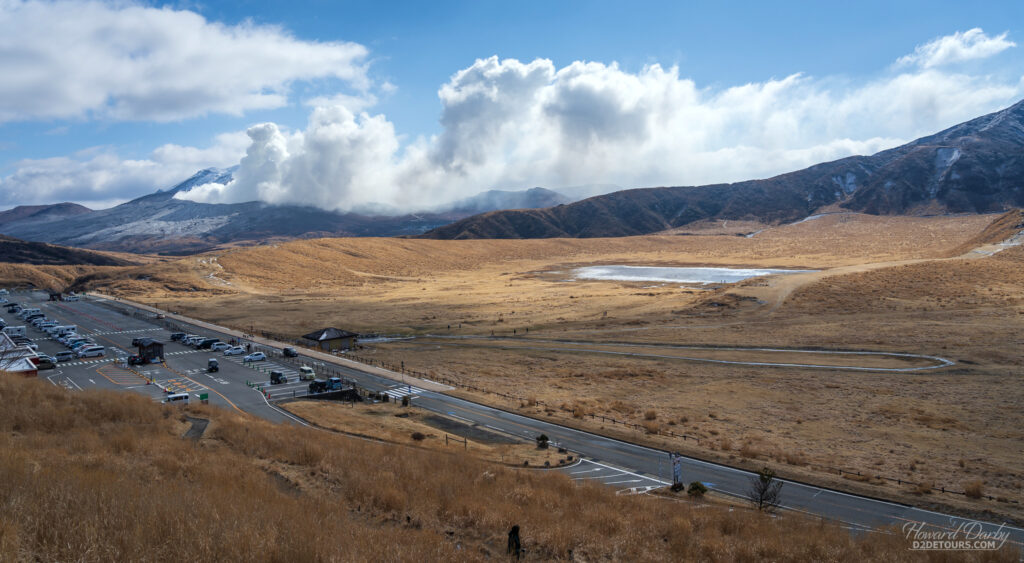

From the volcano we drove to the Kamishikimi Kumanoimasu Shrine, nestled in a forest of cypress trees. It is simply magical climbing the staircase lined with roughly one hundred moss-covered ishidoro (stone lanterns).
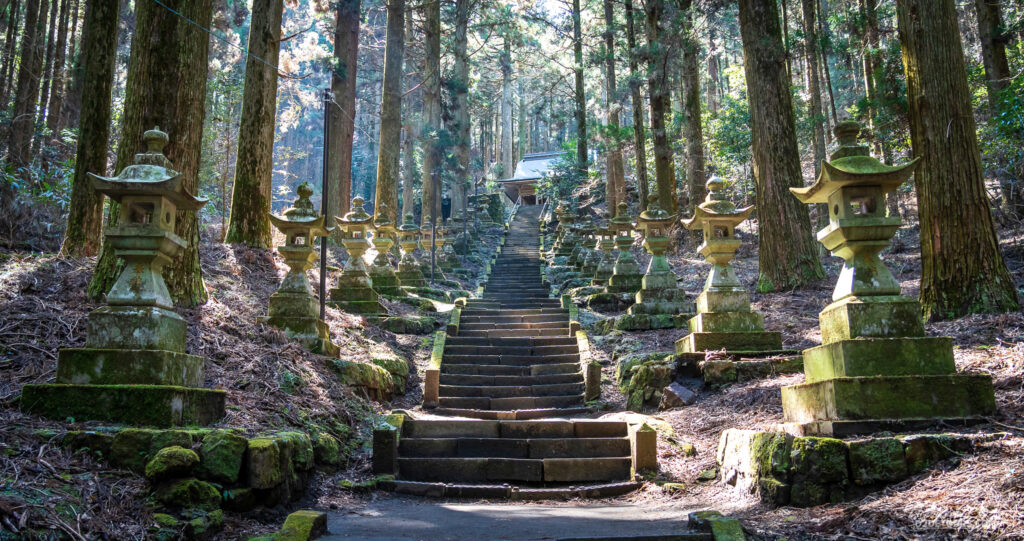
The complex exudes a sense of mystery and apparently no one really does know the origins of the shrine. Local legend says a demon escaped through the Ugeto-iwa (sacred stone), further up the hill behind the main building, leaving a 10-meter hole in its wake and a visit to the complex is supposed to bring good luck to a marriage.
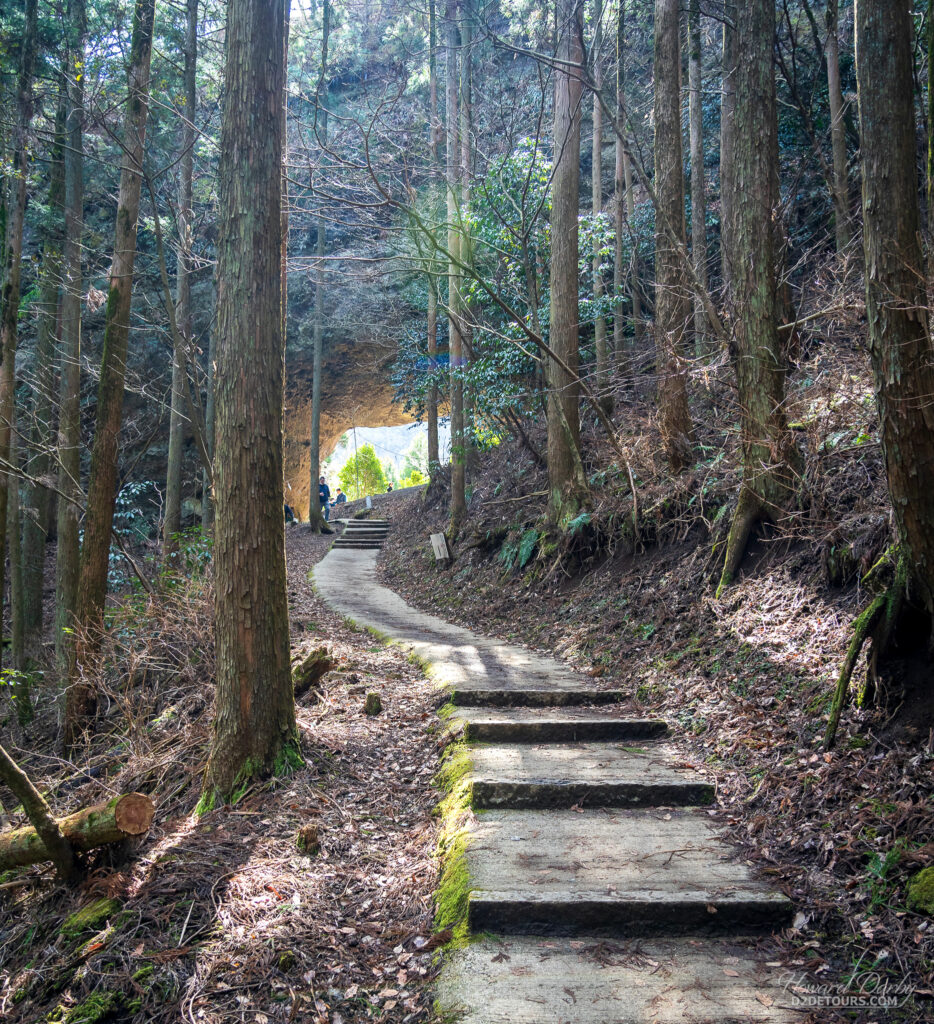
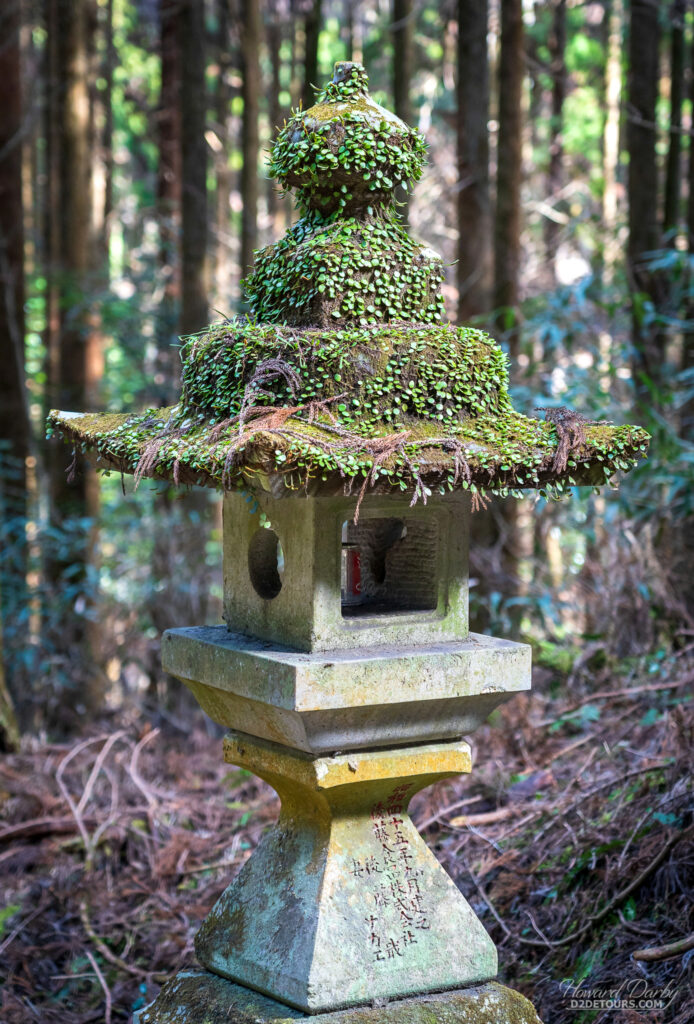
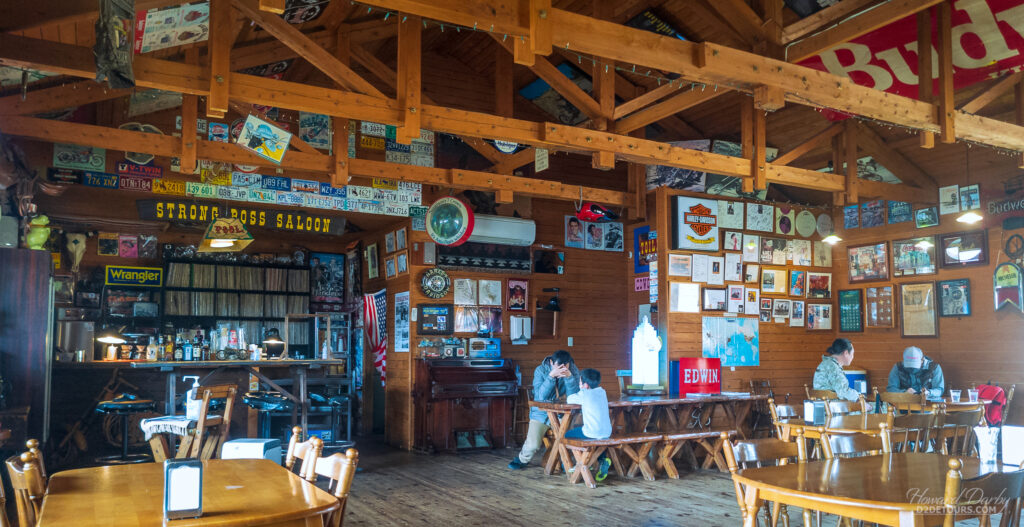
We stayed in a cozy Airbnb within easy walking distance of the Kumamoto castle and half a block from a major road with buses and trams. The only drawbacks to the unit were the beds were located in the loft with ladder access (you did not want to have to make a midnight trip to the potty) and everytime the tram went by we thought we might be experiencing another earthquake!
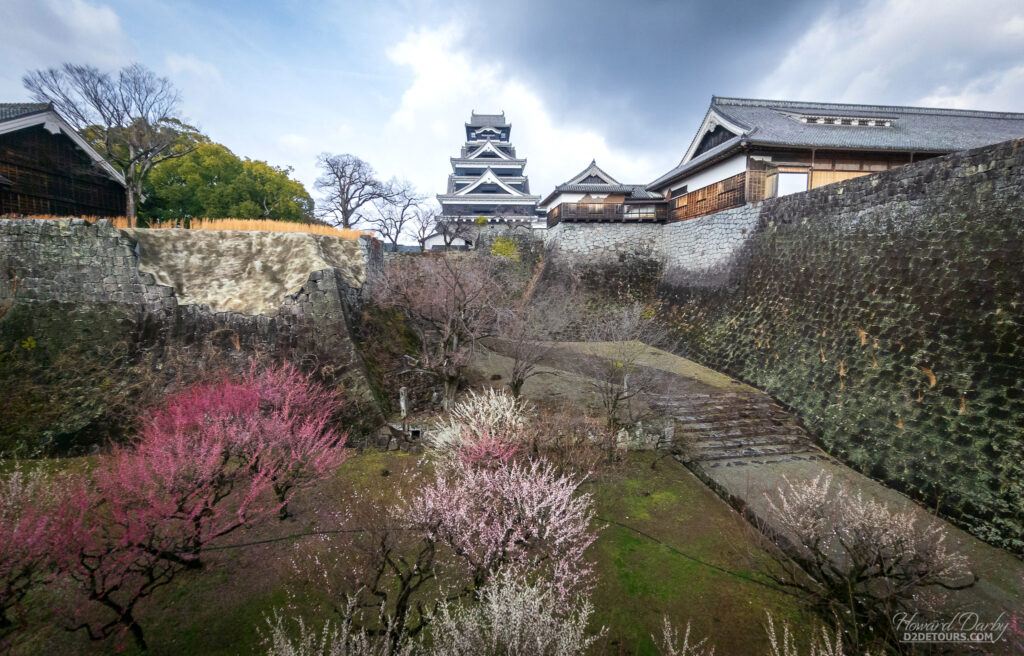
Nagasaki – Getting to Nagasaki from Kumamoto was not a straightforward journey. We started with a 45-minute bus ride to the ferry terminal, then an hour-long ferry ride to Shimabara where we missed the train to Nagasaki by 1 minute, leaving us to sit for an hour waiting for the next one.
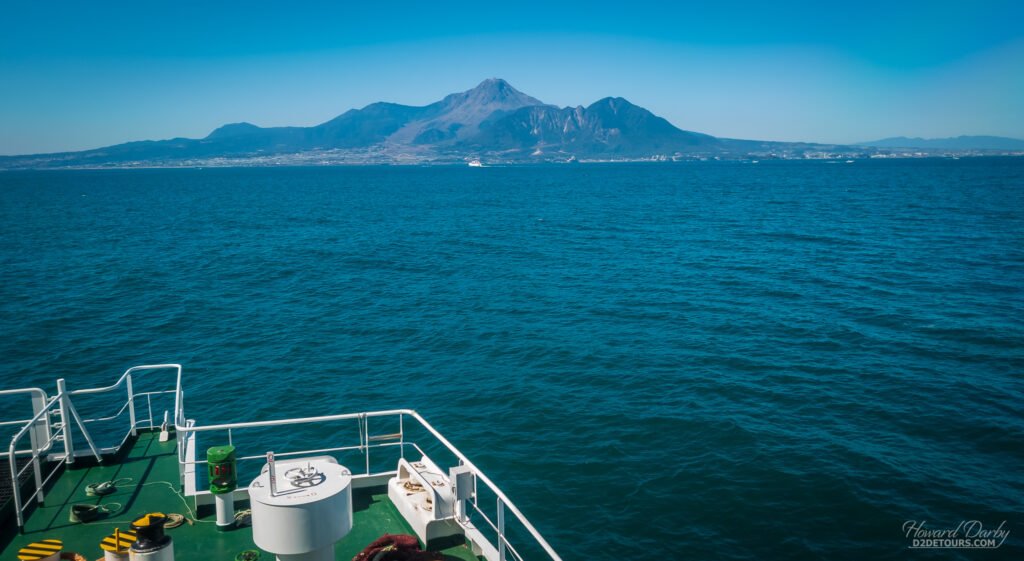
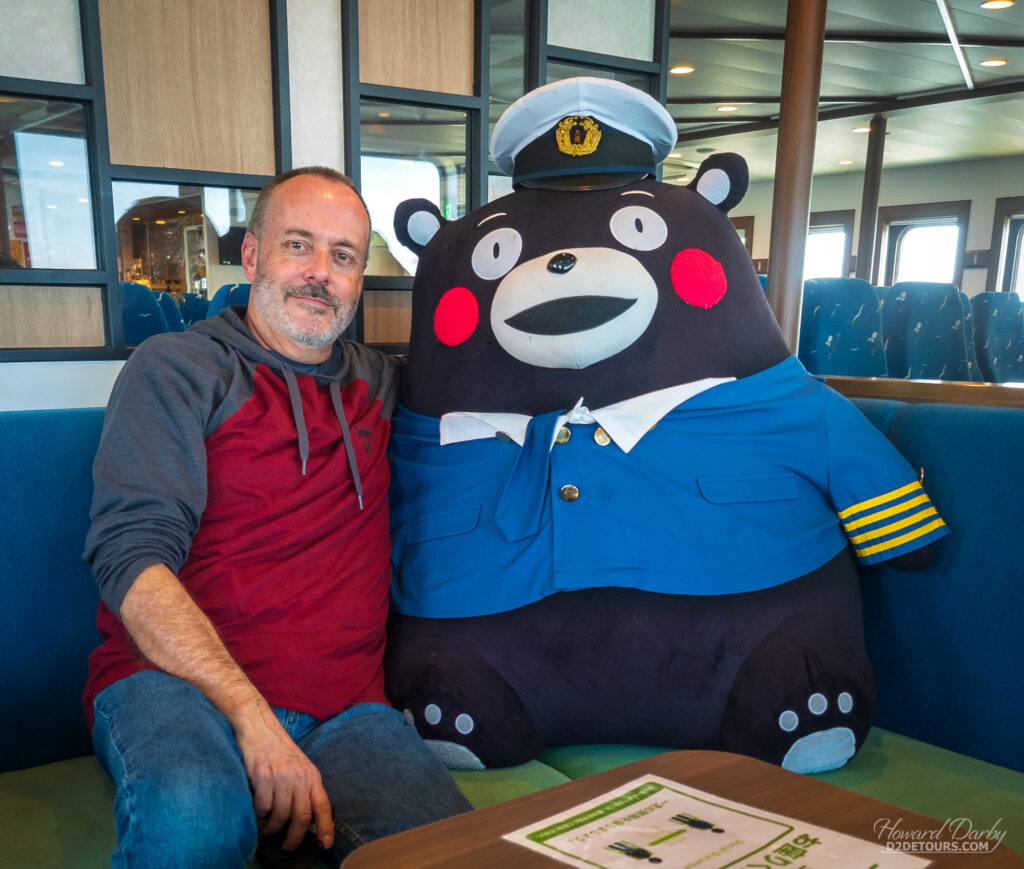
The Shimabara “train” station is a lonely little platform with a couple of benches and a few vending machines. It was a bit chilly so I tried a latte in a can from one of the machines – it was surprisingly hot and sweet, providing a welcome bit of warmth as we waited.
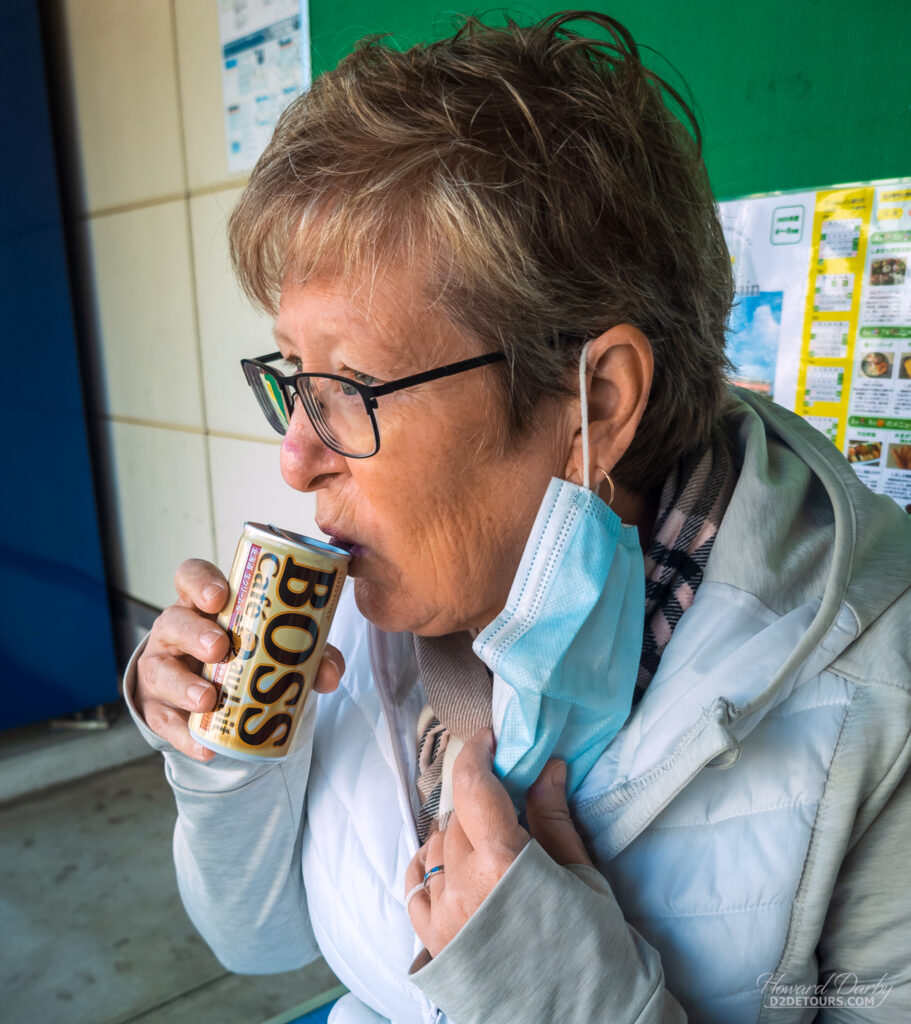
The train is a single car that probably has pre-war roots and we trundled along the narrow track sandwiched between houses and other buildings, so close sometimes I thought if the window had been open I could have grabbed laundry right from the lines. It was a very different perspective on the countryside. We switched to a slightly more modern train at the Isahaya station and arrived in Nagasaki about 2 hours later. We grabbed a taxi and were settled into our hotel in Chinatown by late afternoon.
I really liked Nagasaki. Despite Japan’s rather stringent rules surrounding foreign trade, beginning in 1571, and continuing for several decades, Portugal enjoyed a healthy trading relationship with the country, with the natural harbour at Nagasaki serving as the sole entry point into Japan. The Portuguese may have been the first Europeans to trade with Japan, but the Dutch soon followed, however unlike the Portuguese who believed that spreading the word of God was just as important as the trading of goods, the Dutch were not missionaries. In 1635 the military government of Japan tightened its borders even further and expelled all foreigners from its soil, forcing the Portuguese and Dutch to establish trading posts on Dejima, an artificial island specifically built for that purpose in the Nagasaki harbour. Six years later the Japanese government instituted a ban on Christianity to which the Portuguese objected strenuously. The Dutch sided with the Japanese in this disagreement resulting in a total eviction of the Portuguese, leaving the Dutch as the one and only country with permission to trade with Japan, a status they held until 1854 when Japan agreed to expand its foreign trade policies.
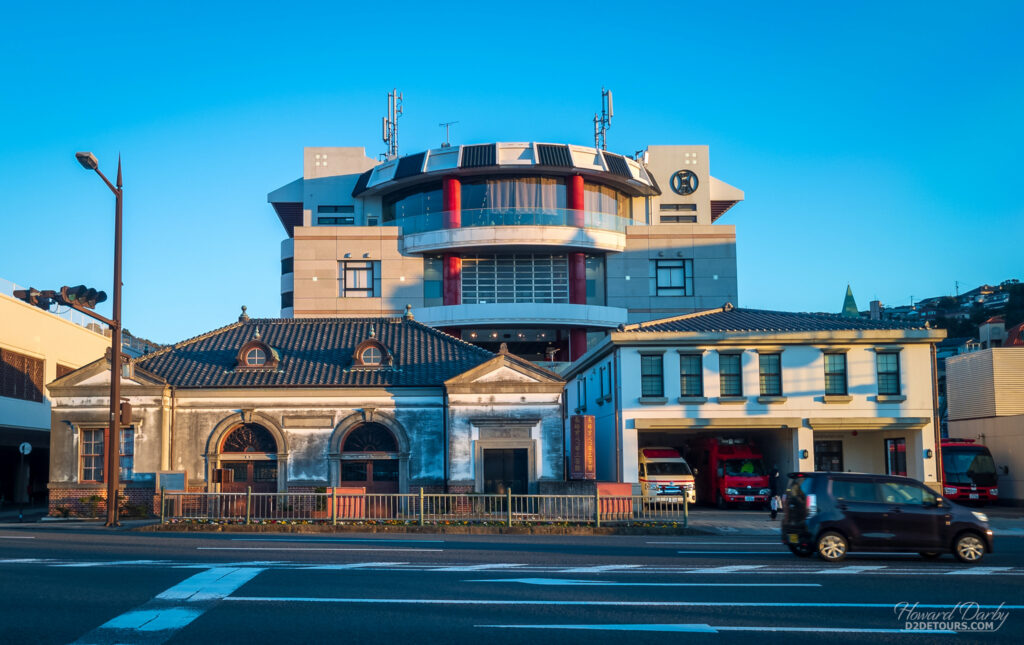
Land reclamation in the early 20th century has joined Dejima with the rest of Nagasaki. The Japanese actually held the Dutch in fairly high regard. Dutch learning (rangaku) was a concerted effort by the Japanese to learn all they could about Western science, medicine and technology. Despite banishing the Portuguese, the Japanese did retain a bit of their influence. The iconic Japanese dish tempura is believed to be a technique learned from the Portuguese (tempero is Portuguese for seasoning), the Japanese just elevated it.
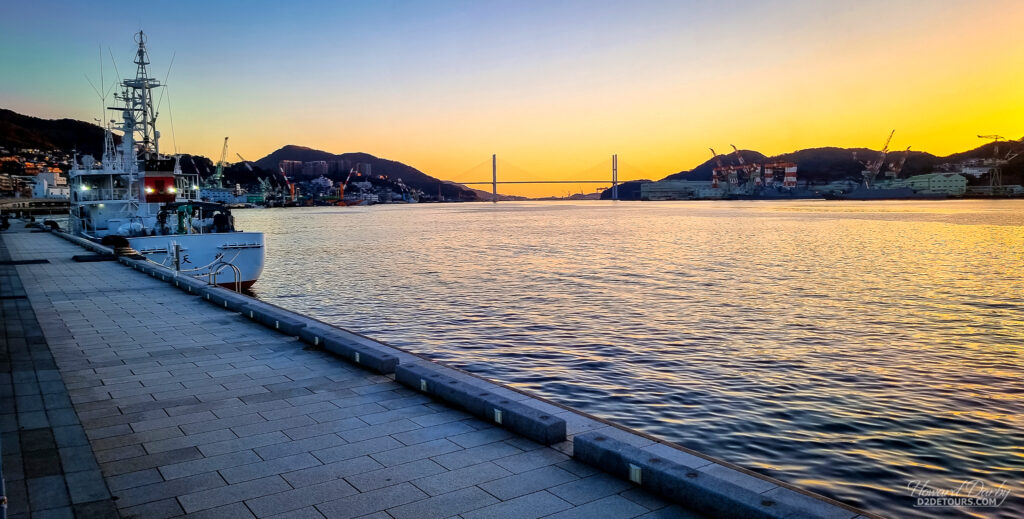
In the early morning hours of August 9, 1945, the B-29 bomber Bockscar, loaded with the atomic bomb nicknamed Fat Man, took off headed for the city of Kokura. Visibility over the city was terrible. With fuel running low after circling overhead three times searching for a clear window, they changed course for the alternate target, Nagasaki. Visibility was equally poor and it looked as though they may have to abort the mission, dumping the bomb in the ocean, when the clouds parted … just enough. The Atomic Bomb museum in Nagasaki is no less impactful than Hiroshima, but does have a different tone, focusing more on the destruction of infrastructure, punctuated by the human toll, and it was extremely worthwhile seeing the two museums in conjunction. Entrance was again only ¥200/pp ($2.00) and there were only a handful of people inside.
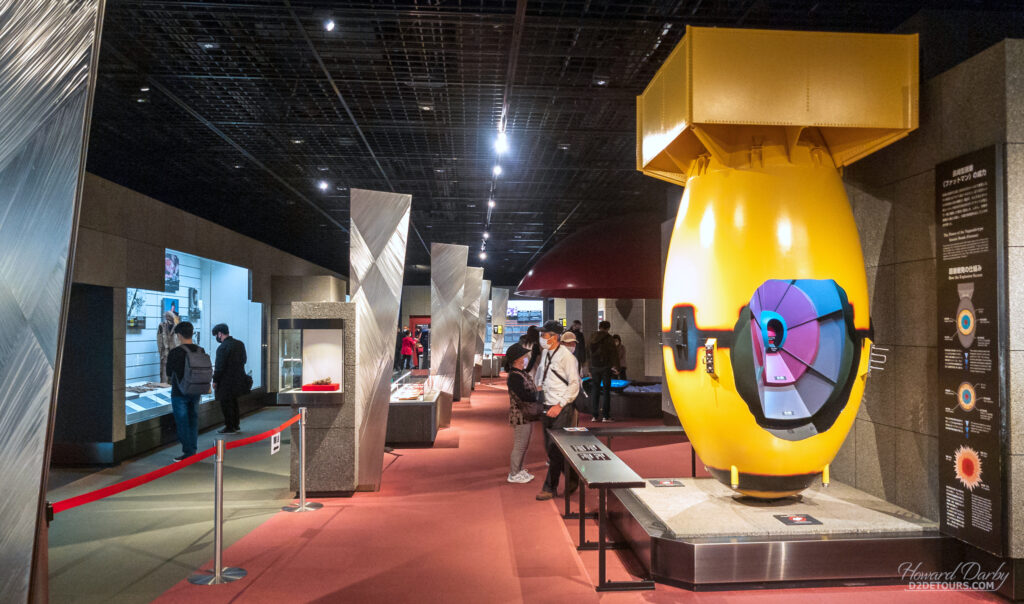
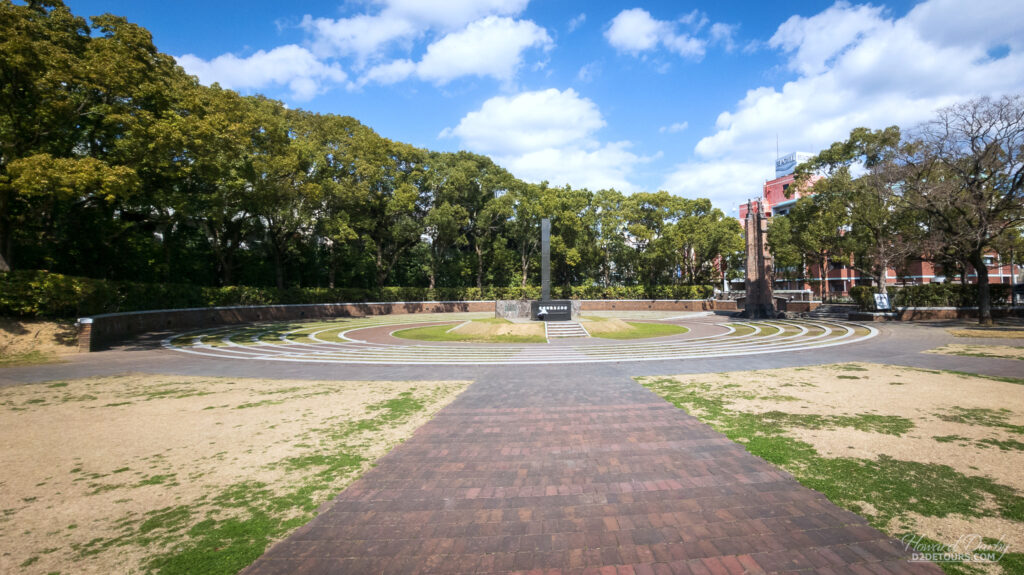
We had two dinners of note in Nagasaki. The first was at Shikairou, a chinese restaurant specializing in Nagasaki’s regional dish, champon. Similar to ramen but with thicker noodles, champon is made with seasonal vegetables and seafood so the taste will differ slightly depending on time of year. It was yummy in February and the view of the habour is spectacular if you’re lucky enough to get one of the tables along the wall of windows.
We highly recommend Unryutei Gyoza. This restaurant was the definition of “looks can be deceiving.” The building is a rundown shack, and inside only has seating for six at the counter (I think there might have been a few more tables upstairs). Run by a husband and wife, they make the gyoza fresh each morning, so once they’ve run out, the doors are closed. Technically their hours of operation are 2:30-8:00pm (closed on Mondays) but we showed up at 5:30 and they were closed. We went back the next day at 4:00 and I’m so glad we did. These bite-sized gyoza were amazing. We started with two plates of gyoza (10 each, but they really are just bite-sized) and an omelet to share. We ended up ordering a third plate of gyoza and another omelet. The bill came to $24 CAD and my mouth is watering just thinking about them again.
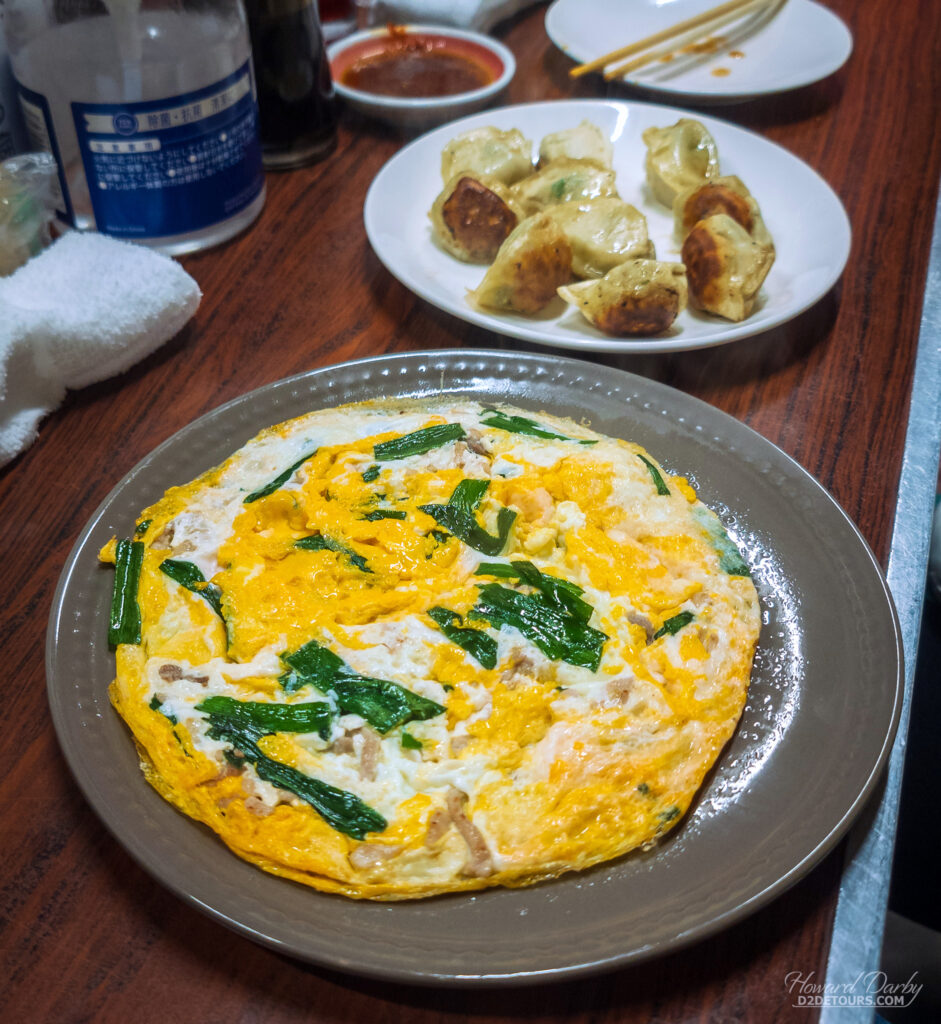
Fukuoka – We had originally planned on taking the ferry from Fukuoka to Busan, South Korea, but with Japan just re-opening after Covid the ferry hadn’t returned to its regular schedule and the timing didn’t work, but Fukuoka does have a great flight schedule to Seoul (in fact Fukuoka is closer to Seoul than it is to Tokyo) so it still worked out. We didn’t do much in the city, really just wandered the neighbourhood around our hotel, taking us through the Fukuoka castle ruins, the Gokoku Shrine and Ohori park.
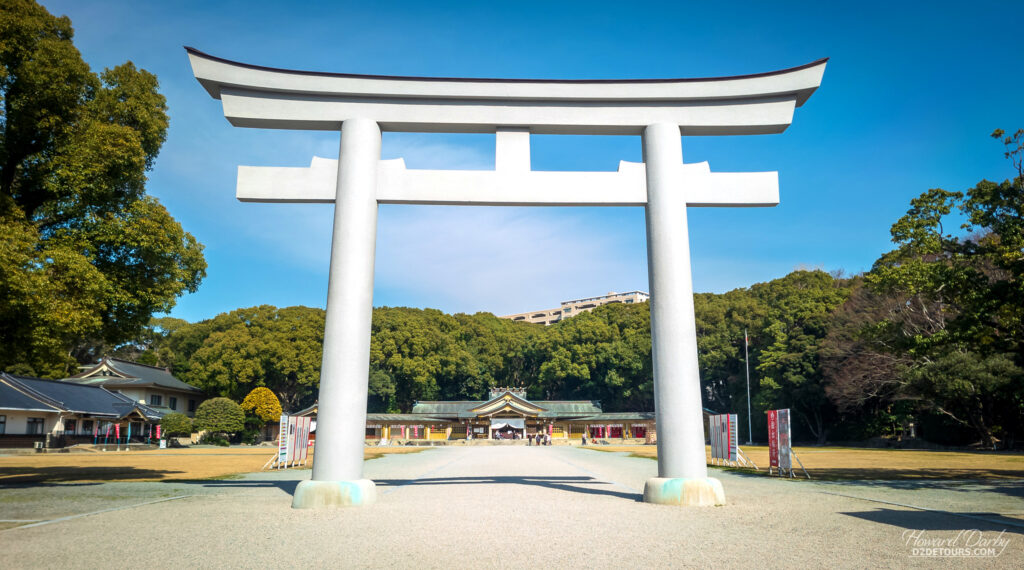
We did make sure to try some tonkotsu ramen, for which the area is famous. Also known as Hakata ramen, the base broth is made with pork bones, pork fat, onion and ginger which are brought to a full boil rather than simmered giving it its characteristic milky colour. It does have a higher fat content than other ramen dishes, but has significantly less sodium. Some restaurants will go overboard with toppings, but traditionalists believe slices of roasted pork, green onions and pickled ginger are all that is needed to create the perfect dish. We tried a bowl at Shin Shin, a chain restaurant with several locations around the city, and were not disappointed.
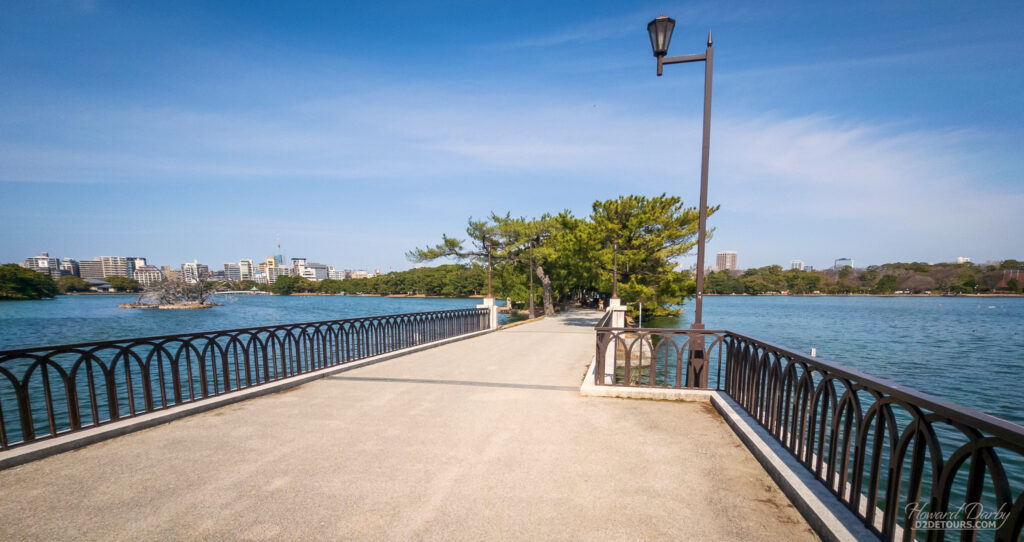
I can’t leave Japan without mentioning their strawberries. Japan produces 148 different varieties and supposedly has the highest consumption ratio of raw strawberries in the world! We saw whole shops devoted to them in Tokyo. We bought pint-sized containers of them on numerous occasions from convenience stores, grocery stores, small markets and every single time they were the sweetest, most succulent berries we’ve ever had.
That wraps up our 26 days in Japan. Off to Seoul!
